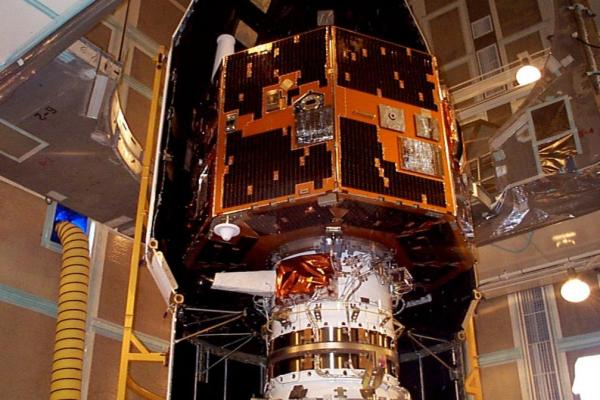IMAGE was launched in 2000 and tasked with studying the Earth’s magnetosphere. The satellite’s signal unexpectedly went dead in 2005.
Amateur astronomer Scott Tilley was trying to find Zuma, the top-secret spy satellite that reportedly failed to secure a stable orbit after it was launched earlier this year.
Instead, he found IMAGE, a NASA spacecraft missing since 2005.
Tilley first observed the spacecraft while scanning S-band frequency data on Jan. 20. On Monday, NASA followed up on Tilley’s lead and confirmed the craft is indeed IMAGE.
Scientists at NASA’s Goddard Space Flight Center pointed five different radio antennas at the spacecraft to field its unique radio frequency signals.
“As of Monday, Jan. 29, observations from all five sites were consistent with the radio frequency characteristics expected of IMAGE,” NASA announced in an update. “Specifically, the radio frequency showed a spike at the expected center frequency, as well as side bands where they should be for IMAGE. Oscillation of the signal was also consistent with the last known spin rate for IMAGE.”
As Tiller explained in a blog post describing his discovery, the IMAGE spacecraft can reboot as it passes through Earth’s shadow.
“Periodically the spacecraft will enter an eclipse and NASA surmised that this may trigger it to restart and apply power back to the communications system,” Tiller wrote. “That appears to have happened!”
IMAGE was launched in 2000 and tasked with studying the Earth’s magnetosphere. Specifically, the satellite was designed to map the concentrations of plasma in the region. The satellite’s signal unexpectedly went dead in 2005. When a pass through Earth’s shadow in 2007 failed to trigger a reboot, NASA gave up on the craft and declared the mission dead.
So far, NASA has only fielded a frequency signal unique to the spacecraft — the agency hasn’t directly communicated with the satellite. After scientists successfully decipher the signal, they hope to turn the satellite’s systems back on.
Unfortunately, translating the signal isn’t a simple task.
“The types of hardware and operating systems used in the IMAGE Mission Operations Center no longer exist, and other systems have been updated several versions beyond what they were at the time, requiring significant reverse-engineering,” NASA said.
Observations suggest IMAGE has slowed its rotation for unknown reasons, which may complicate the task of reopening communication lines with the satellite.













